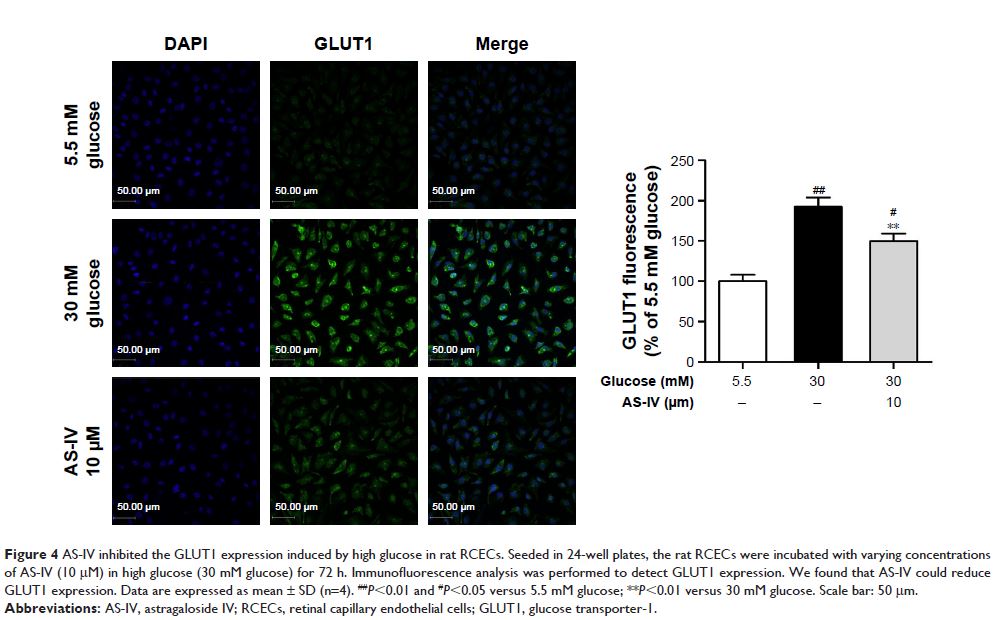108985
论文已发表
注册即可获取德孚的最新动态
IF 收录期刊
- 3.4 Breast Cancer (Dove Med Press)
- 3.2 Clin Epidemiol
- 2.6 Cancer Manag Res
- 2.9 Infect Drug Resist
- 3.7 Clin Interv Aging
- 5.1 Drug Des Dev Ther
- 3.1 Int J Chronic Obstr
- 6.6 Int J Nanomed
- 2.6 Int J Women's Health
- 2.9 Neuropsych Dis Treat
- 2.8 OncoTargets Ther
- 2.0 Patient Prefer Adher
- 2.2 Ther Clin Risk Manag
- 2.5 J Pain Res
- 3.0 Diabet Metab Synd Ob
- 3.2 Psychol Res Behav Ma
- 3.4 Nat Sci Sleep
- 1.8 Pharmgenomics Pers Med
- 2.0 Risk Manag Healthc Policy
- 4.1 J Inflamm Res
- 2.0 Int J Gen Med
- 3.4 J Hepatocell Carcinoma
- 3.0 J Asthma Allergy
- 2.2 Clin Cosmet Investig Dermatol
- 2.4 J Multidiscip Healthc

黄芪甲苷 IV 保护大鼠视网膜毛细血管内皮细胞免受高葡萄糖诱导的氧化损伤
Authors Qiao Y, Fan C, Tang M
Received 26 September 2017
Accepted for publication 22 November 2017
Published 13 December 2017 Volume 2017:11 Pages 3567—3577
DOI https://doi.org/10.2147/DDDT.S152489
Checked for plagiarism Yes
Review by Single-blind
Peer reviewers approved by Dr Dragan Hrncic
Peer reviewer comments 2
Editor who approved publication: Professor Manfred Ogris
Aim: Diabetic retinopathy is
a microvascular complication of diabetes that leads to blindness. Hyperglycemia
causes oxidative stress, which is an important cause in the pathogenesis of
microangiopathy. The aim of this study was to investigate the potential
protective effects of astragaloside IV (AS-IV) in retinal capillary endothelial
cells (RCECs) incubated with high glucose conditions.
Methods and results: Based on rat RCECs cultured with high glucose
(30 mM) in vitro, a significant increase in cell viability in rat RCECs
incubated with both AS-IV and high glucose for 48 or 72 h by MTT assay. The
increased viability was accompanied by decreased glucose transporter-1
expression using immunofluorescent assay. Meanwhile, AS-IV reduced
intracellular hydrogen peroxide and superoxide, decreased mitochondrial
reactive oxygen species in rat RCECs with high glucose by the fluorescent
probes, and lowered malondialdehyde levels. In addition, AS-IV increased the
activities of total superoxide dismutase, MnSOD, catalase, and glutathione
peroxidase. The glutathione content also increased after AS-IV treatment.
Furthermore, AS-IV reduced NADPH oxidase 4 expression by western blot method.
Conclusion: These results suggest that the main mechanism
underlying the protective effects of AS-IV in high glucose-injured RCECs may be
related to its antioxidative function.
Keywords: astragaloside
IV, retinal capillary endothelial cells, oxidative stress, Glut1, Nox4
